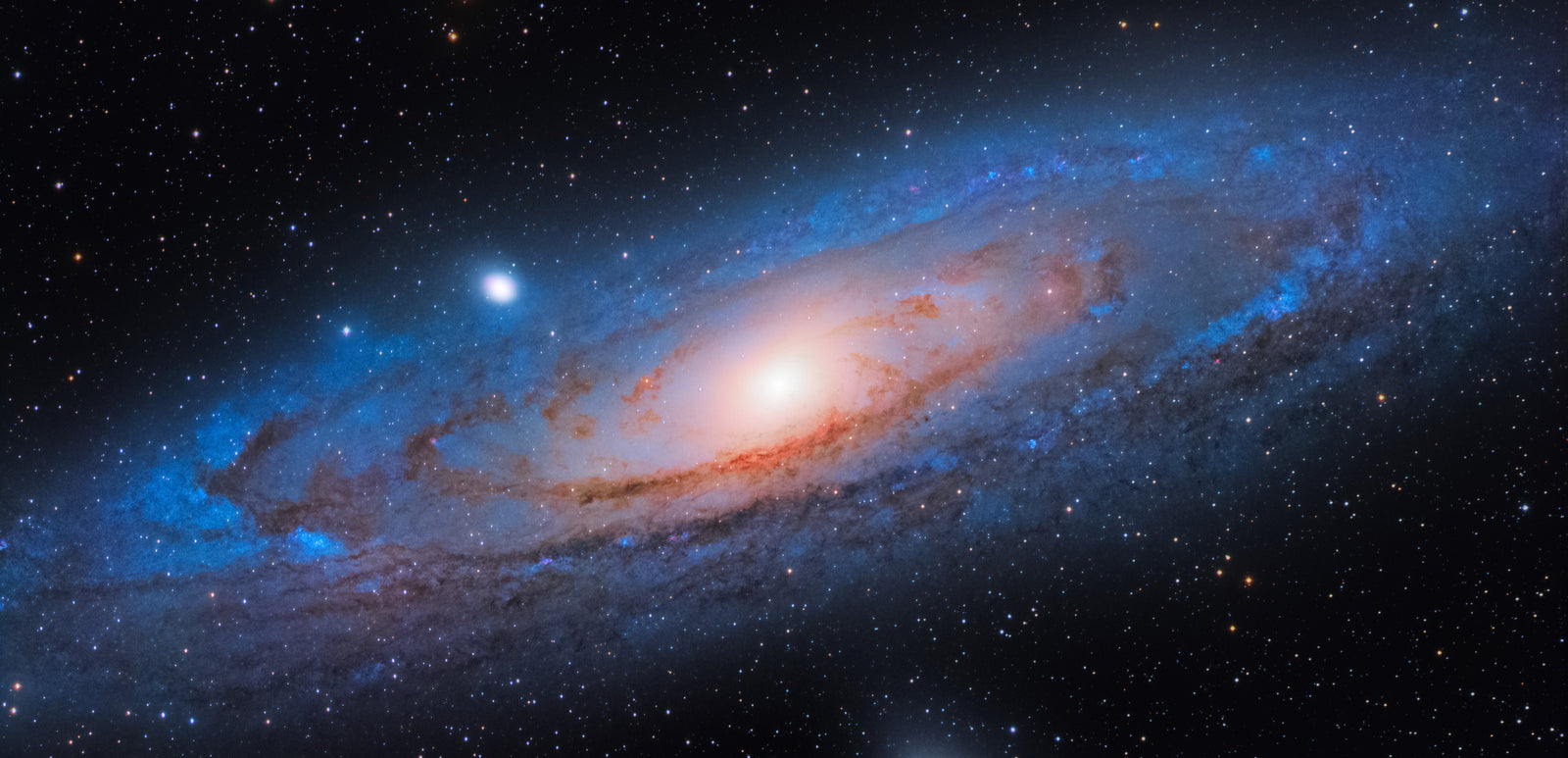How Do Beginner Telescopes Work?
We have a great blog article detailing the three main types of telescopes and how they work, including pros and cons of each. Head to our blog post titled How To Use A Telescope For Beginners to learn more!
What Is The Best Telescope For A Beginner?
There are a variety of great beginner telescopes out there, and it depends on what your budget is and what you'd like to do with your telescope. If you're looking for something small and portable, a tabletop Dobsonian is a great choice, especially for kids. However, we usually recommend getting the largest telescope you can both carry and afford, as a telescope's aperture (front opening) is its most important feature. Full size Dobsonians provide the best bang-for-your buck in terms of aperture, so if you want all the light-gathering power you can get, go with a Dobsonian telescope.
If you'd like a telescope that assists you with finding objects in the night sky, Celestron's StarSense Explorer series uses your smartphone's technology to help you locate objects. The StarSense Explorer series is a great middle ground between manual telescopes, like most Dobsonians, and more expensive combinations of a telesacope and GoTo mount.
If you have a bit of a higher budget, the Celestron NexStar SE series can both find objects and automatically point the telescope at them too. Last but not least, if you'd like a telescope that can do it all and take great astrophotographs with the push of a button, smart telescopes are an ideal choice and can wow your friends and family with almost zero learning curve.
What Night Sky Objects Are Good For Beginners To Observe Through A Telescope?
The moon is a fantastic object to observe through any telescope, including all beginner telescopes. We recommend observing the moon around the first or third quarter phase when the moon is halfway illuminated. This is one of the best times to see details in the many craters on the moon, which is guaranteed to impress beginners of all ages. Other great objects in the solar system to observe are Jupiter, where you can usually see its four main moons, and Saturn, which you can usually see its rings. As a reminder, never look at the sun through a telescope, as it can cause permanent damage to vision.
Other great objects to observe with children are star clusters like the Double Cluster and Hercules Cluster, as well as the Orion Nebula, Lagoon Nebula, and the Andromeda Galaxy. These objects are large enough and bright enough that they can be easily found and viewed with most beginner telescopes.
What Accessories Should I Consider When Buying A Beginner Telescope?
Most beginner telescopes come with everything you need to get started, which includes the telescope, the tripod (mount), and at least one eyepiece. Other accessories to consider when buying a telescope are:
- A quality eyepiece, which will greatly improve the view. Be sure to get an eyepiece that can fit in your telescope's focuser, which is usually the 1.25" size for beginner telescopes. If you're not sure what eyepiece is right for you, reach out to our helpful experts, they'd be happy to help you select what's best for your telescope and your needs.
- A red dot finder, which will help you easily locate objects in the night sky. Some beginner telescopes come with a red dot finder already, but if yours doesn't, you may want to consider buying one so you can easily locate objects in the night sky. Simply align your finder with the object you want to look at, and it will appear centered in the eyepiece. A finder scope is especially important for reflector telescopes, such as Dobsonians and Newtonians. Their reflector design flips the image upside down, making pointing difficult without a finder scope, as everything moves in the opposite manner as to what you'd expect.
- An AC power adapter or portable battery, which will allow your motorized telescope to plug into AC power or be used out in the field. Power adapters and batteries are typically not included with most telescopes and mounts, so be sure to add one to your cart to avoid a frustrating wait when you discover the need during your first use.
- A laser collimator, which will align your reflector telescope's optics. This is essentially a must-buy if you're planning on purchasing a Dobsonian or Newtonian telescope, and is good to have if you're purchasing a Schmidt-Cassegrain. Without a collimator, your telescope may not be able to reach perfect focus, which can be incredibly frustrating.
How Do I Store A Telescope When It's Not In Use?
Protecting a telescope when not in use is important piece of maintenance that often gets overlooked. When not in use, always place the included dust covers on the front of the telescope and eyepiece so no dust can enter the optics. We recommend storing the telescope in a closet inside your home where it is away from direct sunlight and large temperature changes. Ideally, your telescope remains close to room temperature when not in use.









